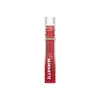What's inside
What's inside
 Key Ingredients
Key Ingredients

 Benefits
Benefits

 Concerns
Concerns

 Ingredients Side-by-side
Ingredients Side-by-side

Mica
Cosmetic ColorantSilica
AbrasiveMagnesium Myristate
Dimethicone
EmollientCI 77891
Cosmetic ColorantCaprylic/Capric Triglyceride
MaskingNylon-12
Boron Nitride
AbsorbentSynthetic Wax
AbrasiveIsononyl Isononanoate
EmollientTrimethylsiloxysilicate
EmollientTriethoxycaprylylsilane
CI 77742
Cosmetic ColorantPhenoxyethanol
PreservativeCaprylyl Glycol
EmollientLauroyl Lysine
Skin ConditioningTocopheryl Acetate
AntioxidantCI 77491
Cosmetic ColorantEthylhexylglycerin
Skin ConditioningAluminum Hydroxide
EmollientParfum
MaskingCI 73360
Cosmetic ColorantMica, Silica, Magnesium Myristate, Dimethicone, CI 77891, Caprylic/Capric Triglyceride, Nylon-12, Boron Nitride, Synthetic Wax, Isononyl Isononanoate, Trimethylsiloxysilicate, Triethoxycaprylylsilane, CI 77742, Phenoxyethanol, Caprylyl Glycol, Lauroyl Lysine, Tocopheryl Acetate, CI 77491, Ethylhexylglycerin, Aluminum Hydroxide, Parfum, CI 73360
Dimethicone
EmollientDimethicone Crosspolymer
Emulsion StabilisingPolyglyceryl-2 Triisostearate
EmulsifyingDimethicone/Vinyl Dimethicone Crosspolymer
Skin ConditioningTribehenin
EmollientIsononyl Isononanoate
EmollientTitanium Dioxide
Cosmetic ColorantGlyceryl Caprylate
EmollientCaprylyl Glycol
EmollientSilica
AbrasiveButylene Glycol
HumectantTocopherol
AntioxidantParfum
MaskingCI 19140
Cosmetic ColorantCI 77491
Cosmetic ColorantPigment Red 57
Cosmetic ColorantCI 45410
Cosmetic ColorantCI 15985
Cosmetic ColorantDimethicone, Dimethicone Crosspolymer, Polyglyceryl-2 Triisostearate, Dimethicone/Vinyl Dimethicone Crosspolymer, Tribehenin, Isononyl Isononanoate, Titanium Dioxide, Glyceryl Caprylate, Caprylyl Glycol, Silica, Butylene Glycol, Tocopherol, Parfum, CI 19140, CI 77491, Pigment Red 57, CI 45410, CI 15985
Ingredients Explained
These ingredients are found in both products.
Ingredients higher up in an ingredient list are typically present in a larger amount.
Caprylyl Glycol is a humectant and emollient, meaning it attracts and preserves moisture.
It is a common ingredient in many products, especially those designed to hydrate skin. The primary benefits are retaining moisture, skin softening, and promoting a healthy skin barrier.
Though Caprylyl Glycol is an alcohol derived from fatty acids, it is not the kind that can dry out skin.
This ingredient is also used as a preservative to extend the life of products. It has slight antimicrobial properties.
Learn more about Caprylyl GlycolCi 77491 is also hydrated iron III oxide. It's sole purpose is to give a red/pink hue to products.
Iron III oxides are classified as inorganic chemicals for coloring.
Synthetically created Ci 77491 is considered safer than those naturally found. This is because the synthetically created version may contain less impurities. Iron oxides are generally non-toxic and non-allergenic.
Learn more about CI 77491Dimethicone is a type of synthetic silicone created from natural materials such as quartz.
What it does:
Dimethicone comes in different viscosities:
Depending on the viscosity, dimethicone has different properties.
Ingredients lists don't always show which type is used, so we recommend reaching out to the brand if you have questions about the viscosity.
This ingredient is unlikely to cause irritation because it does not get absorbed into skin. However, people with silicone allergies should be careful about using this ingredient.
Note: Dimethicone may contribute to pilling. This is because it is not oil or water soluble, so pilling may occur when layered with products. When mixed with heavy oils in a formula, the outcome is also quite greasy.
Learn more about DimethiconeIsononyl Isononanoate is a synthetic skin-conditioner and texture enhancer. It is created from nonanoic acid, a fatty acid found in cocoa and lavender oil.
As an emollient, Isononyl Isononanoate helps keep your skin soft and smooth. This is because emollients create a barrier on the skin to trap moisture in.
Isononyl Isononanoate helps give products a velvet feel and improves spreadability.
Learn more about Isononyl IsononanoateParfum is a catch-all term for an ingredient or more that is used to give a scent to products.
Also called "fragrance", this ingredient can be a blend of hundreds of chemicals or plant oils. This means every product with "fragrance" or "parfum" in the ingredients list is a different mixture.
For instance, Habanolide is a proprietary trade name for a specific aroma chemical. When used as a fragrance ingredient in cosmetics, most aroma chemicals fall under the broad labeling category of “FRAGRANCE” or “PARFUM” according to EU and US regulations.
The term 'parfum' or 'fragrance' is not regulated in many countries. In many cases, it is up to the brand to define this term.
For instance, many brands choose to label themselves as "fragrance-free" because they are not using synthetic fragrances. However, their products may still contain ingredients such as essential oils that are considered a fragrance by INCI standards.
One example is Calendula flower extract. Calendula is an essential oil that still imparts a scent or 'fragrance'.
Depending on the blend, the ingredients in the mixture can cause allergies and sensitivities on the skin. Some ingredients that are known EU allergens include linalool and citronellol.
Parfum can also be used to mask or cover an unpleasant scent.
The bottom line is: not all fragrances/parfum/ingredients are created equally. If you are worried about fragrances, we recommend taking a closer look at an ingredient. And of course, we always recommend speaking with a professional.
Learn more about ParfumSilica, also known as silicon dioxide, is a naturally occurring mineral. It is used as a fine, spherical, and porous powder in cosmetics.
Though it has exfoliant properties, the function of silica varies depending on the product.
The unique structure of silica enhances the spreadability and adds smoothness, making it a great texture enhancer.
It is also used as an active carrier, emulsifier, and mattifier due to its ability to absorb excess oil.
In some products, tiny microneedles called spicules are made from silica or hydrolyzed sponge. When you rub them in, they lightly polish away dead skin layers and enhance the penetration of active ingredients.
Learn more about Silica